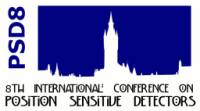Speaker
Prof.
Ian McLean
Description
The set comprising of silicon charge-coupled devices, low band-gap infrared
arrays and bolometer arrays provide astronomers with position-sensitive
photon detectors from the X-ray to the sub-mm. In recent years the most
significant advances have occurred in the near-infrared part of the spectrum
because not only have the detector formats caught up with those of CCDs but
also because the advent of adaptive optics has meant that very largest
telescopes can achieve their diffraction limit in the infrared. Thus
infrared cameras, spectrometers and hybrid instruments that measure spatial
and spectral information simultaneously are now commanding the greatest
attention on telescopes from 6.5-10 meters in effective aperture. Scientific
applications of these new infrared instruments span everything from the
search for nearby solar systems to the orbital motions of stars about the
massive black hole at the center of the Milky Way and studies of the first
galaxies to form in the high redshift Universe. Background, principles and
applications of infrared array detectors to astronomy and astrophysics will
be discussed with particular emphasis on work at the W. M. Keck 10-m
telescope on Mauna Kea, Hawaii.
Author
Prof.
Ian McLean

